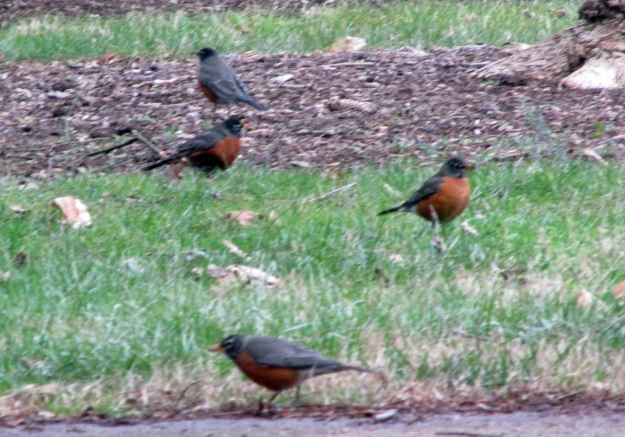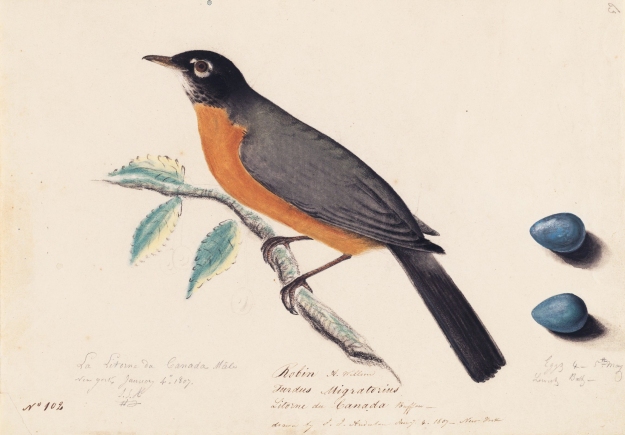
Photo by Hans Toom/Pixabay • The Swainson’s thrush is named for 19th-century naturalist William Swainson. A yearly visitor to the region, the bird’s appearance provides visible evidence that fall migration has started in earnest.
I like to kick off fall migration with a warbler sighting, but for a change of pace, a Swainson’s thrush showed up in my yard on Labor Day weekend.
I usually see more Swainson’s thrushes in the autumn rather than spring, so the sighting wasn’t anything out of the ordinary. My observation did provide the visible evidence that fall migration, an annual phenomenon among our feathered friends, has started in earnest.
The Swainson’s thrush does not nest in the region. These birds spend the summer breeding season in Canada, Alaska and the northern United States. They also nest in areas of the mountainous western United States.
In migration, this small thrush can be quite widespread, with sightings possible from coast to coast and all points between in the continental United States.
Thrushes that do nest during the summer in the region include wood thrush and veery, as well as the hermit thrush, which is also a winter resident.
William Swainson, the namesake of the Swainson’s thrush, was a famous English naturalist living in the 19th century. Swainson, who grew up in London but spent much of his adult life in New Zealand, excelled as an English ornithologist, malacologist, conchologist, entomologist and artist. Besides the thrush, eight other species of birds are named in his honor.
Two of the other birds — Swainson’s warbler and Swainson’s hawk — are resident in the United States for at least the spring and summer months.
The other six species include Swainson’s francolin, Swainson’s sparrow, Swainson’s antcatcher, Swainson’s fire-eye, Swainson’s flycatcher and Swainson’s toucan.

Photo by Bryan Stevens • After striking a window, this Swainson’s thrush was given time to recover in a box in a dark, quiet place before being released to continue its migration.
In what I find a surprising twist, Swainson never visited the United States of America, but in 1806, he accompanied the English explorer Henry Koster to Brazil in South America. Swainson and his family emigrated to New Zealand in 1841. Swainson settled near the New Zealand city of Wellington, only to have earthquakes in 1848 and 1855 devastate the shoreline near his estate, which he called Hawkshead. He found the pioneer life in New Zealand difficult, especially when a native Maori chief pushed his own claims to Swainson’s estate. Swainson died of bronchitis on Dec. 6, 1855, at the age of 66.
I usually see Swainson’s thrushes every fall, but some members of the family have been harder for me to observe. I’ve only twice seen a gray-cheeked thrush. My last sighting of one took place in 2018, 18 years after my first sighting.
The species is aptly named.
The gray-cheeked thrush lacks an eye ring, and its most prominent feature is the grayish plumage around the bird’s face. No evidence of brown or buff coloration intrude into the face region.
Gray-cheeked thrushes nest far from Tennessee and Virginia. In fact, they nest almost to the very edge of the tundra region in the far north. Because of this tendency to nest in remote regions, experts have had difficulty determining population trends for this species.
Most thrush migration actually takes place at night. The daytime observations of thrushes involve individuals that have stopped for a brief respite to refuel and rest.
Both the gray-cheeked thrush and Swainson’s thrush belong to the genus Catharus, a term derived from Ancient Greek that can be described as “pure” or “clean” in reference to the plumage of some of the members of the genus.
Most of this family of talented singers, which also includes the veery and the wood thrush, will depart the borders of the United States until next spring. When they get ready to leave, most thrushes will make a remarkable non-stop journey that will take them to the region where they will wait out the cold winter months. Enjoy them before they depart.
•••
To share a sighting, ask a question or make a comment, email me at ahoodedwarbler@aol.com.











